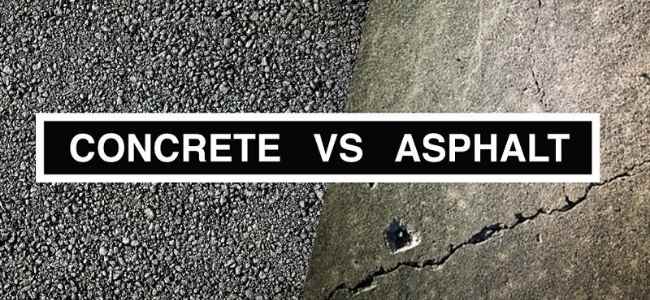We often hear the terms asphalt and asphalt concrete – and they get mixed up frequently, particularly among laypeople. But is there a difference between asphalt and asphalt concrete? If you are among the countless people who are wondering about these terminologies, this post will try to clarify the confusion for you.
What is Asphalt?
Asphalt is all around us. But despite its ubiquity, most people are unaware of what it is, where it comes from, and how it’s made.
Strictly speaking, asphalt refers to the bitumen-class hydrocarbon compound that comes from natural deposits. It is a semi-solid or highly viscous liquid form of petroleum. Aside from fossil deposits, asphalt can also be derived from refined oil. It typically comes in a black or dark brown color.
Asphalt is perhaps among the oldest engineering materials used by man which dates back to the early 2600 BC. Ancient Egyptians used bitumen as compounds for embalming mummies and as a waterproofing agent. Other ancient civilizations used asphalt in constructing roads and irrigation systems.
Alongside the advancement in the construction and engineering field, natural asphalts have been refined to improve their inherent properties. Nowadays, it is most popularly used for construction and engineering purposes. Asphalt is used as a binding material for gravel and crushed stone or aggregate which forms a flexible pavement. It is used to build roads, driveways, sidewalks, patios, parking lots, runways, airports, bike paths, and playgrounds.
However, this naturally occurring compound also has other purposes. In liquid form, asphalt is used as a coating layer for a vehicle under chassis, pipes, and roofing.
What is Asphalt Concrete?
“Asphalt concrete” is a specially prepared asphalt mixture comprised of asphalt as binder and aggregates. The mixture is ready for use in paving applications such as roads, driveways, airports, highways, etc. In engineering and construction parlance, the technical terms used are “asphalt concrete”, “bituminous asphalt concrete” and “AC”.
The term “concrete” refers to any composite material that is composed of a binder and mineral aggregate. As such, the term can also be used for “concrete cement” which uses cement as a binder, and even “epoxy cement” which uses synthetic binder epoxy. However, to the layperson, asphalt concrete is most often referred to as “blacktop” or “asphalt”.
What are the ingredients of asphalt concrete?
Asphalt concrete has two basic compositions: aggregates and bitumen compounds. Aggregates comprise 95% of the hot mix asphalt pavement. It is composed of sand, gravel, and crushed stone. Bitumen compound comprises 5% of the mixture. This dark or black viscous material is made of polycyclic hydrocarbons that bind the aggregate together.
There are several kinds of asphalt concrete mix based on the process by which aggregate binds with the bitumen.
1. Hot mix asphalt concrete
This type uses high heat to bind aggregate and bitumen. It is the most durable asphalt mixture and is used in high-load, heavy-traffic conditions like airport runways and highways.
2. Warm mix asphalt concrete
Instead of high temperature, this asphalt mixture uses waxes, emulsions, and zeolites to bind the concrete. Although the warm mix is eco-friendlier, safer for workers, and reduces fossil fuel needs, it is less durable than hot mix asphalt concrete. Florida asphalt paving experts from ABC Paving recommend warm mix asphalt concrete for low traffic areas, repairs, and patching.
3. Mastic asphalt concrete
Mastic asphalt concrete has less bitumen content but also uses heat for binding aggregates. It has long been used in industrial environments because of its chemical-resistant properties. In construction, it is used for roads, bridges, roofing, and waterproofing.
4. Cold mix asphalt concrete
As the name suggests, cold mix asphalt concrete does not use heat for application. It uses water for blending the aggregate and the binder. It works just like a patching compound. Once in a blended state, asphalt is less viscous and is easier to compact and apply. It is often used for patching or repairing small potholes or cracks, especially when the weather condition does not permit hot mix asphalt. Since it less durable compared to hot mix, it is recommended as temporary patches or small-scale fixes.
5. Cut-back asphalt concrete
This asphalt mixture uses petroleum solvent or kerosene to dissolve the asphalt cement before mixing with the aggregate. Cut-backs reduce the viscosity of asphalt which makes it easier to work. It is used for lower temperature applications such as slurry seals, tack coats, stabilization material, and fog seals.
6. Natural asphalt concrete
The last type is the natural asphalt concrete which is derived from the bituminous rock that is naturally found in certain parts of the planet.
All said asphalt and asphalt concrete is the same thing except for their use. Choosing the right type of asphalt concrete is a more crucial concern.


